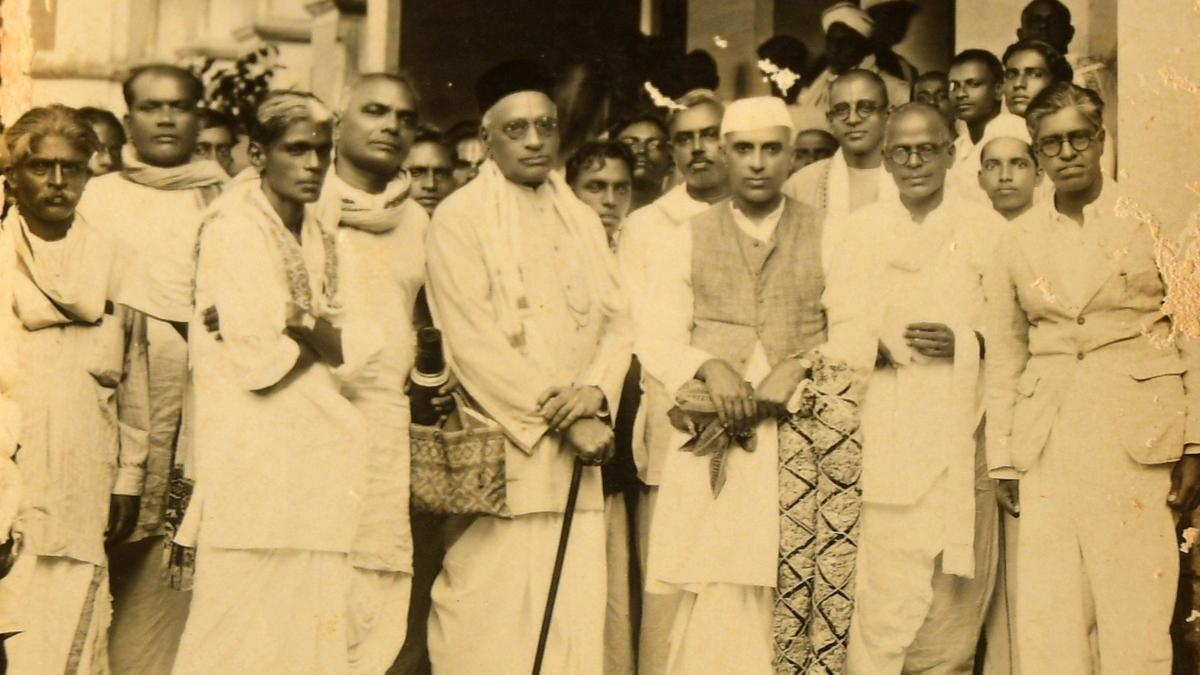
In 1936, Tiruchi set an example for inner-party rebellion in the Congress
The Hindu
Tiruchi urban election mirrors 1969 presidential race; rebel candidate wins, sparking Congress turmoil and national leadership discord.
An election in the Tiruchi urban local body can be called a forerunner to the 1969 presidential election wherein the ruling party’s nominee lost to a rebel candidate. During the fourth presidential election in August that year, V.V. Giri, the “candidate” of the then Prime Minister, Indira Gandhi, defeated N. Sanjiva Reddy, proposed by the old guard in the Congress, popularly called Syndicate.
Exactly 33 years earlier, a similar situation occurred in the election to the chief of the Tiruchi municipality (which was upgraded as a municipal corporation in the 1990s) when W. Ponniah Pillai, a retired railway official and rebel Congress candidate, defeated P. Ratnavelu Thevar by three votes at a meeting of elected members of the Municipal Council on August 10, 1936.
Originally a member of the Justice Party, Thevar joined the Congress in the mid-1920s. Immediately after the re-election of S. Satyamurti as Tamil Nadu Congress Committee president in Karaikudi in January 1936, Thevar bagged the presidency of the Tiruchi District Board. C. Rajagopalachari, a towering leader of the Congress, appreciated Satyamurti for acquiring “another feather in your cap”, according to P.G. Sundararajan’s The Life of S. Satyamurti (South Asian Publishers & Bookventure, 1988).
The trouble began when Thevar, who also won in a by-election to the Legislative Council, was chosen by the TNCC for the post of chairman of the Tiruchi Municipal Council, which was under supersession for two years. T.S.S. Rajan, who represented Tiruchi in the erstwhile Central Assembly and a prime member of the Rajagopalachari camp, spearheaded the rebellion along with his colleagues. They “did not want to concede Thevar a hat trick”, says the biography, pointing out that since the Congress had a majority in the Council, the election should have been “automatic”.
While F.G. Natesa Aiyar and R.S. Mani proposed and seconded Thevar’s candidacy, Rajan, who played a key role in organising the Vedaranyam Salt March in 1930, and T.V. Somasundaram Pillai did the job for Ponniah Pillai. The winner got 18 votes, while the runner-up polled 15 votes. After the results were declared, Thevar was dignity personified, as he congratulated Ponniah Pillai. Rajan, according to a report published by The Hindu on August 11, 1936, had all along been pleading with the TNCC working committee that the committee leave it to the “good sense” of local councillors to choose whomsoever they liked, independent of party labels. This was because he was aware of the public feeling, the report said.
The political drama did not end here. Satyamurti, K. Kamaraj’s political mentor, was livid with Rajan’s “act of indiscipline”. On August 26, the TNCC working committee met in Chennai. Apart from its members, only Thevar and Tiruchi District Congress Committee chief T.V. Swaminatha Sastri, and not Ponniah Pillai, had attended the meeting as special invitees. It decided to seek the resignation of all the dissidents. Rajan had not only immediately complied with his instruction but also quit the party. But Pillai remained defiant and said he would not resign on his own.
However, the election’s fallout disturbed the Congress national leadership when Rajagopalachari announced his decision to quit the national working committee, the parliamentary board, and the TNCC. Rajmohan Gandhi’s biography Rajaji (Penguin Books, 1997) states that Rajagopalachari wanted to resign even his membership of the Congress. In a letter dated August 12, 1936, Vallabhbhai Patel, while acknowledging that Rajan had indulged in an act of “rank indiscipline”, however, urged Satyamurti to persuade Rajagopalachari to withdraw his resignation (The Satyamurti Letters, Volume I, Pearson Longman, 2008). Apparently, the national leadership was not pleased with the manner in which Satyamurti had been handling the TNCC affairs. All India Congress Committee (AICC) general secretary J.B. Kripalani, in his letter to the TNCC secretary (Kamaraj) on August 31, 1936, alluded to Thevar’s nomination and stated that “it does create heart burning when persons who can hardly be considered Congressmen are selected as Congress candidates”.





















 Run 3 Space | Play Space Running Game
Run 3 Space | Play Space Running Game Traffic Jam 3D | Online Racing Game
Traffic Jam 3D | Online Racing Game Duck Hunt | Play Old Classic Game
Duck Hunt | Play Old Classic Game











